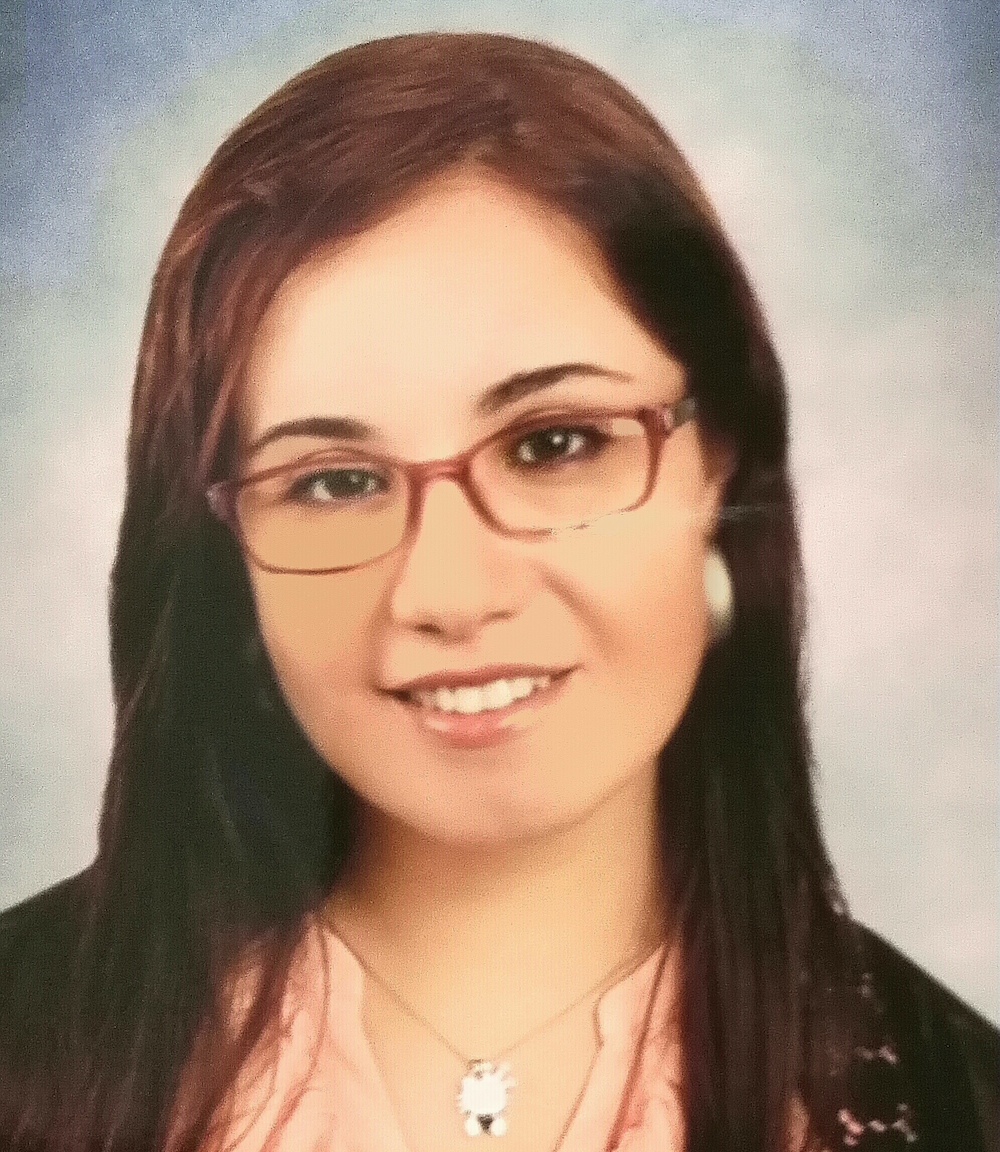‘Assemblage’ as a creative incentive in contemporary mural artworks.
Egyptian artist Amal Ezzat Soliman shares with us a synopsis of her PhD thesis on experimentation in contemporary art, and in particular on the "assemblage" genre and techniques.
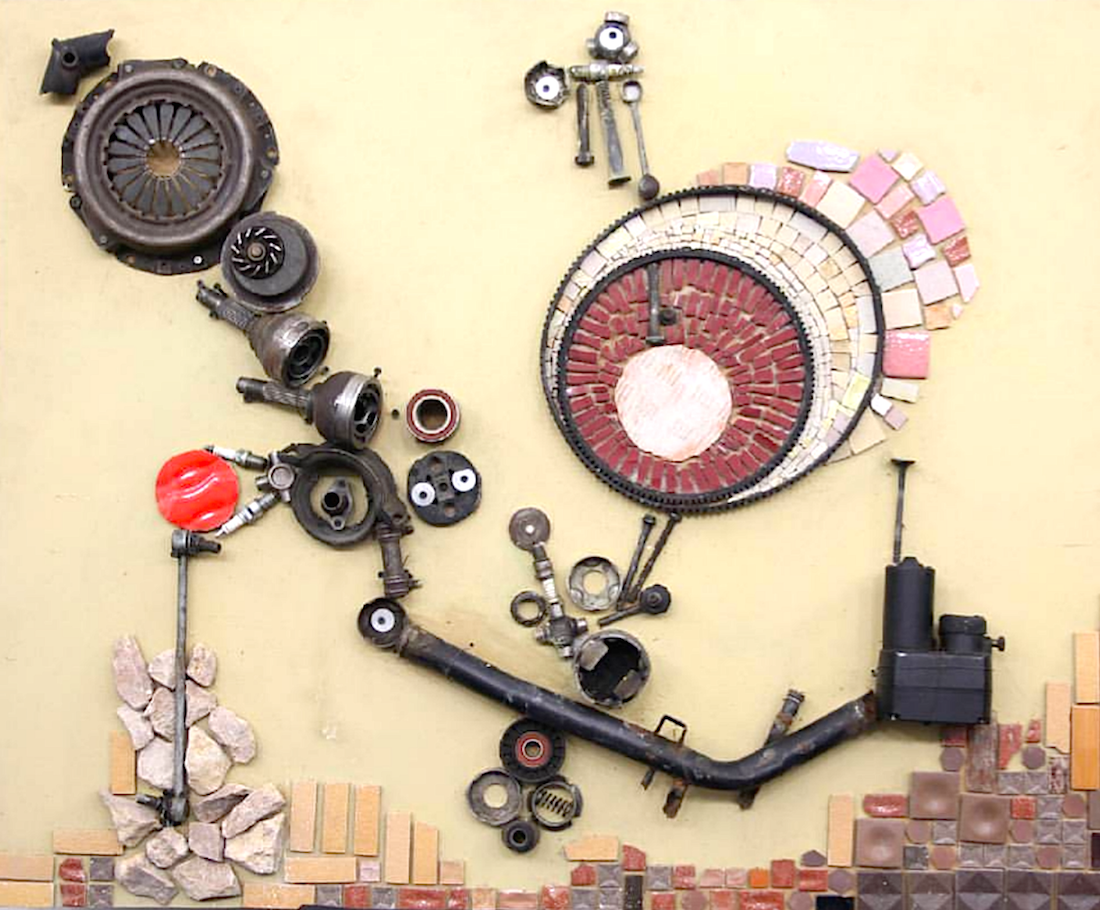
Contemporary artists have always been looking for new forms of expression. They have experimented with new materials provided by technology, such as plastics and new types of lighting, which revolutionized performance techniques. The use of these non-traditional materials has played a major role in giving modern art its unique character, which has influenced artists, their artistic techniques and the richness of their creative imagination. on.
The scientific progress witnessed in the twentieth century influenced the understanding of the reality of art in society, accompanied by revolutions that responded to the unprecedented social and technical changes that characterize modern life. It was also accompanied by a change in the aesthetic ideas and effects of the prevailing artistic concepts that influenced the development of modern artistic trends, like ‘Assemblage’.
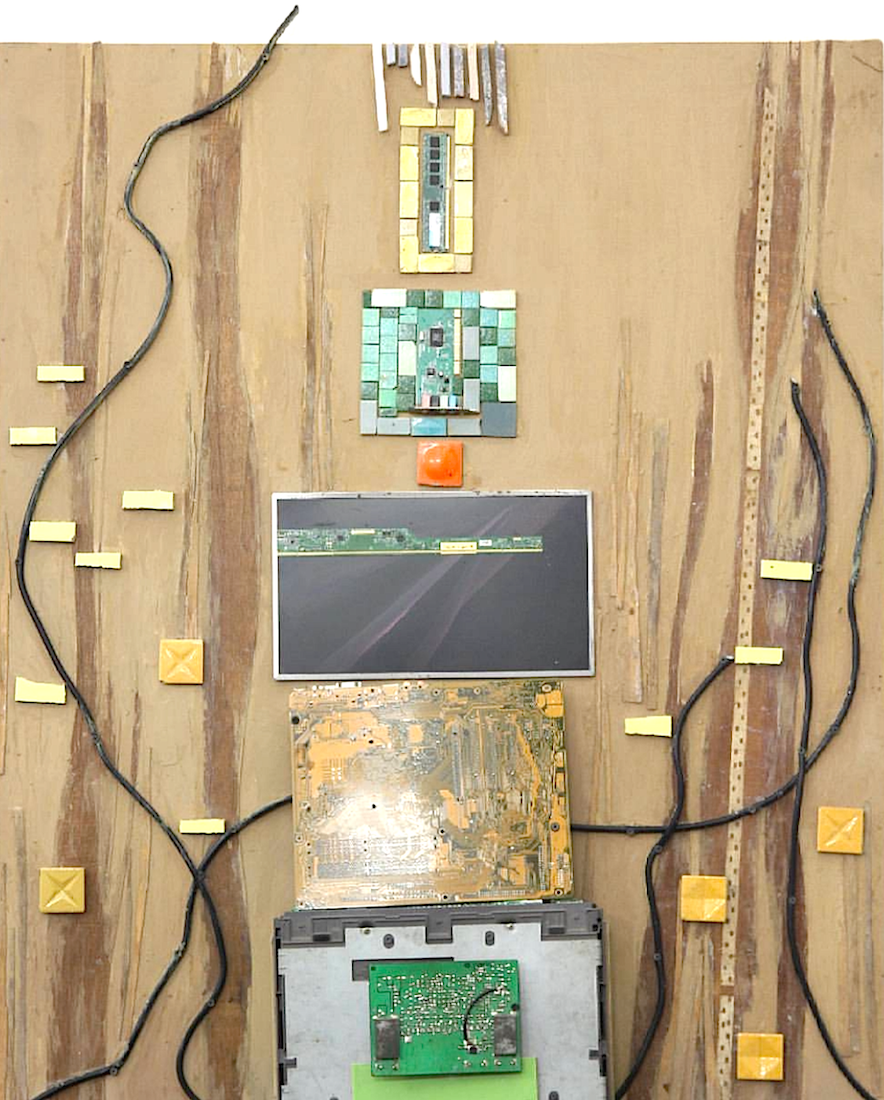
Experimentation in the arts is inseparable from the historical and social awareness of each artist. When combined with creativity, he/she can create new ways and devise new tools, means and forms through which to express his/her vision of the world and develop his/her creative movement, from the historical, social and human practice, and hence it is a source of knowledge and a criterion for the validity of any theory.
The spirit of experimentation in the field of arts does not arise and does not move isolated from the spirit of experimentation in the other cognitive fields. The artist has modernized the re-formation of the remnants of raw materials and wastes in abstract forms, characterized by freedom from all forms, achieved through the formations of complex and innovative assemblies, where the artist employs the directions of lines and spaces and blocks and spatial relations to gain a special character through the overlap and integration of shapes and spaces, which is led by the artist's passion towards the realization of the idea and content of the work.
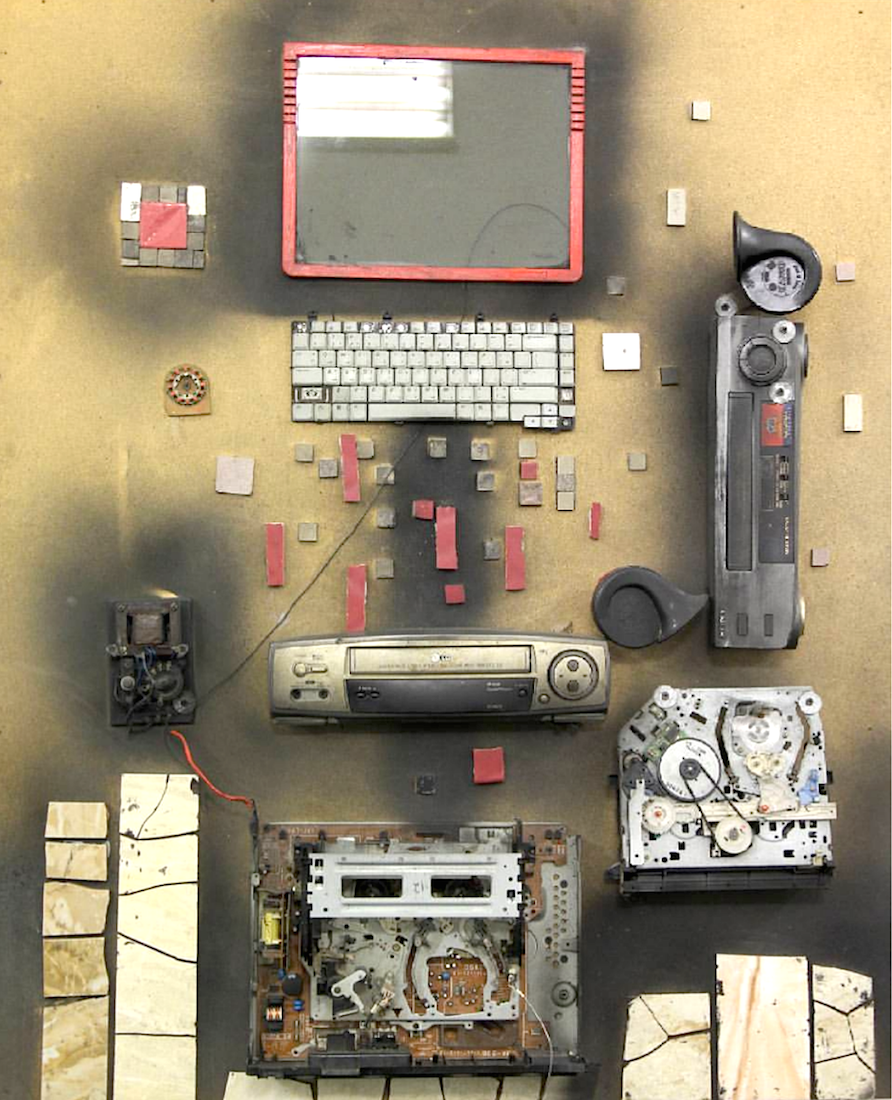
Assemblage
The term "assemblage" was formulated by the artist Jean Dubuffet to refer to works that transcended cubism. He defined it as: "The art in which elements of reality are assembled to erase many of the boundaries between oil painting and sculpture in favor of the simplest idea of ordering parts". Assemblage is a more comprehensive term than collage and applies to sculpture as well as oil painting and multimedia works, and a number of researchers refer to Assemblage as three-dimensional configurations in which a variety of different materials is combined.
Many styles have dealt with the art of Assemblage such as cubism, Dadaism, surrealism, new realism and pop art. Assemblage art accommodates a wide variety of methods that sometimes intersect with the techniques used in the industry. The art of grouping varied according to the artists’ methods, different concepts and objectives, but despite this diversity there was unity of thought and content.
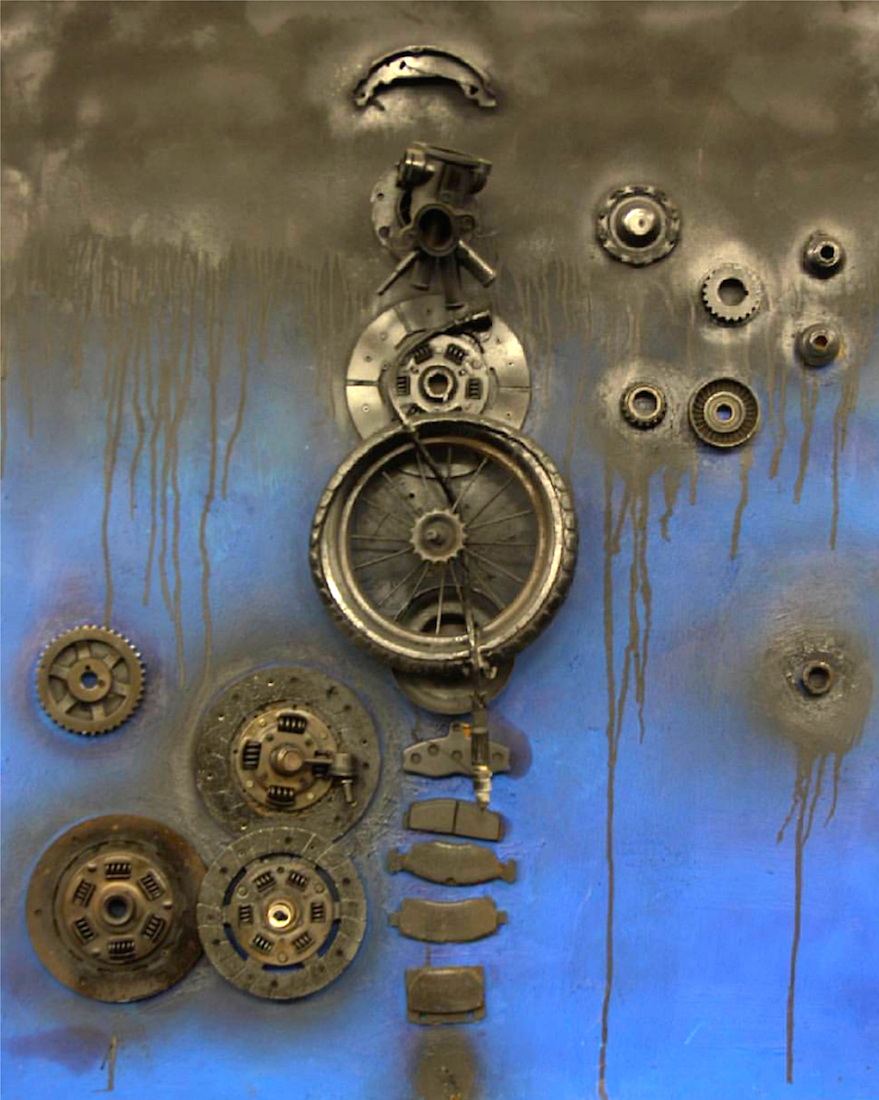
The artists used all types of raw materials from the surrounding environment, and they also considered technology raw materials suitable for inclusion in their work. They used industrial scrap materials as natural extensions of objects found in nature and used natural raw materials as a logical source of artistic forms. Like with the Mosaic technique, the work is constructed of objects or small pieces of contiguous material, or several raw materials close to with each other, whether natural, such as stones, pebbles and shells, or manufactured such as pottery, glass, Smalto (pieces of thick colored glass tiles) and others.
These pieces shall be fixed on the carrier surface by one of the fixing materials. The most important feature is that they are not filled with spaces or elements of the work, but how to overcome these pieces rhythm and coordination of different sizes and colors, contact and materials, leaving the joints to confirm fragmentation and assembly, which is one of the most important characteristics. Although many civilizations in different times and places have known different types and treatments of mosaics for various purposes, they are also related to the period from Greek civilization to the end of the European Middle Ages (Byzantine civilization), which culminated in that period.
The images published here are some of my experimentations with the 'assemblage' technique, that bear the traditional character of the art of wall painting but in contemporary formulations.
Amal Ezzat Soliman is a visual artist form Alexandria, Egypt, currently living in Oman. She has received a PhD in Fine Arts for mural painting. She has participated in many exhibitions in Egypt and Oman, and won the honor prize for expats in Oman in 2016. She has also exhibited collections of her works at the Egyptian Embassy in Oman and at the French Omani center.
